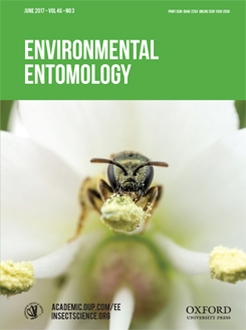The walnut twig beetle, Pityophthorus juglandis Blackman, and associated fungus Geosmithia morbida Kolařík, Freeland, Utley, & Tisserat constitute the insect–fungal complex that causes thousand cankers disease in walnut, Juglans spp., and wingnut, Pterocarya spp. Thousand cankers disease is responsible for the decline of Juglans species throughout the western United States and more recently, the eastern United States and northern Italy. We examined the flight capacity of P. juglandis over 24-h trials on a flight mill in the laboratory. The maximum total flight distance observed was ~3.6 km in 24 h; however, the mean and median distances flown by beetles that initiated flight were ~372 m and ~158 m, respectively. Beetles flew for 34 min on average within a 24-h flight trial. Male and female flight capacities were similar, even though males were larger than females (0.64 vs. 0.57 mm pronotal width). Age postemergence had no effect on flight distance, flight time, or mean flight velocity. The propensity to fly, however, decreased with age. We integrated results of flight distance with propensity to fly as beetles aged in a Monte Carlo simulation to estimate the maximum dispersal capacity over 5 d, assuming no mortality. Only 1% of the insects would be expected to fly >2 km, whereas one-third of the insects were estimated to fly <100 m. These results suggest that nascent establishments remain relatively localized without anthropogenic transport or wind-aided dispersal, which has implications for management and sampling of this hardwood pest.
How to translate text using browser tools
16 March 2017
Flight Capacity of the Walnut Twig Beetle (Coleoptera: Scolytidae) on a Laboratory Flight Mill
Aubree M. Kees,
Andrea R. Hefty,
Robert C. Venette,
Steven J. Seybold,
Brian H. Aukema
ACCESS THE FULL ARTICLE
It is not available for individual sale.
This article is only available to subscribers.
It is not available for individual sale.
It is not available for individual sale.

Environmental Entomology
Vol. 46 • No. 3
June 2017
Vol. 46 • No. 3
June 2017
dispersal
Geosmithia morbida
Pityophthorus juglandis
sexual dimorphism
thousand cankers disease




